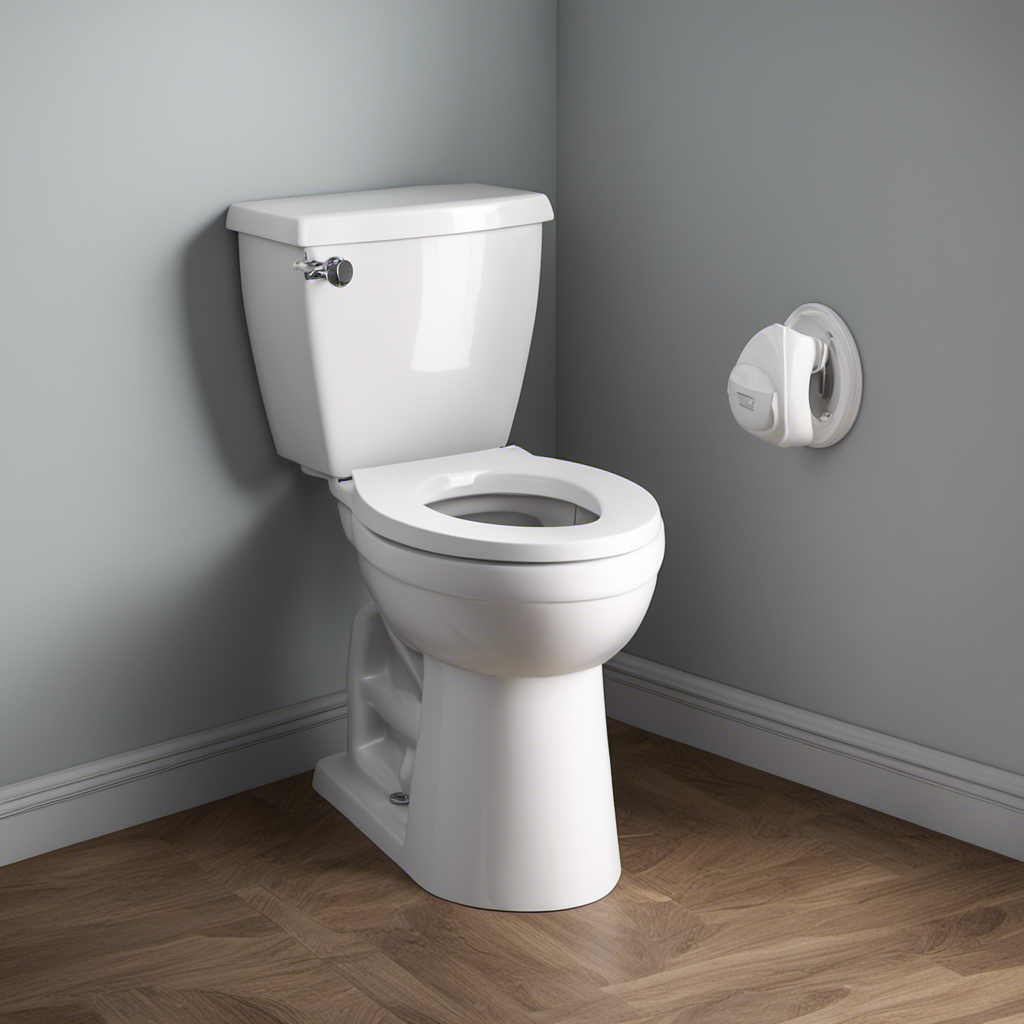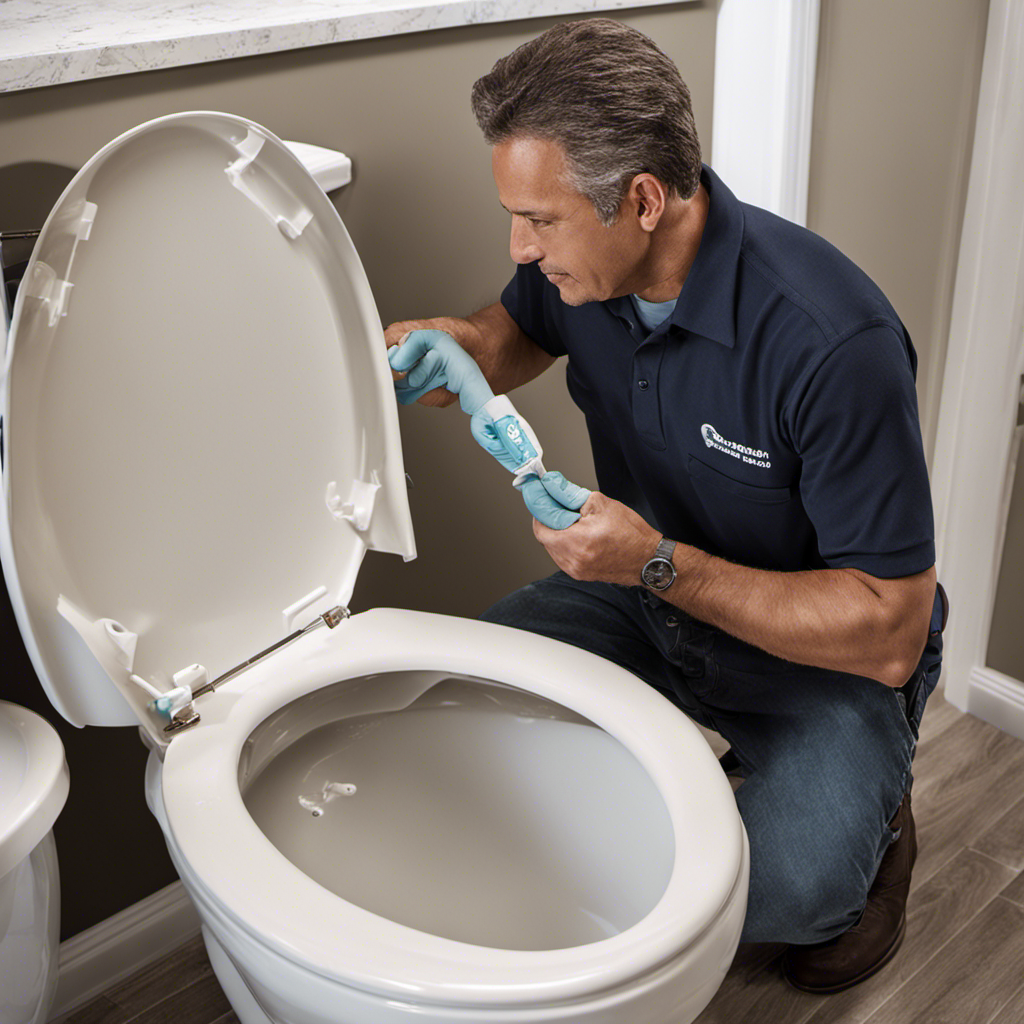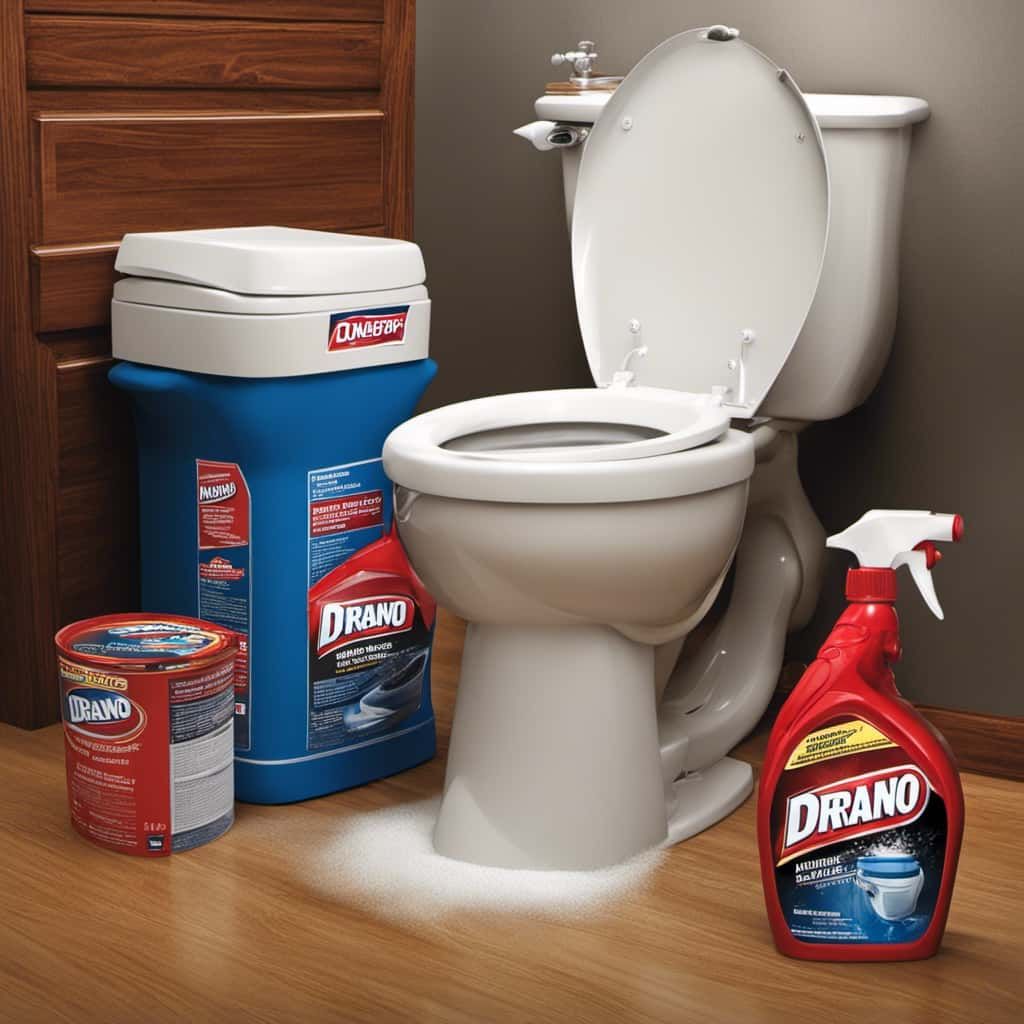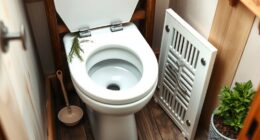So, you’ve decided it’s time to tackle the project of installing a new toilet wax ring. Don’t worry, I’ve got you covered with a step-by-step guide on how to get the job done right.
With just a few necessary tools and materials, you’ll be well on your way to a leak-free and properly functioning toilet.
Let’s dive in and get your bathroom back in working order in no time.
Key Takeaways
- Troubleshoot common problems such as leaks or cracks in the toilet bowl or flange and ensure the flange is securely attached to the floor.
- Choose between traditional wax rings or wax-free rings based on personal preference and specific toilet needs, as both types effectively seal the toilet.
- Clean surfaces thoroughly before installation, removing old wax ring and residue, and ensuring they are dry to maximize the effectiveness of the wax ring.
- Properly align and position the toilet for stability, using a level to ensure it is level with the floor, and securely attach it using bolts and nuts.
Necessary Tools and Materials
To install the toilet wax ring, you’ll need a few necessary tools and materials. First, gather the following items:
- A wax ring
- A wrench
- A putty knife
- A bucket
- Some gloves
Before starting the installation process, it’s important to troubleshoot any common problems that may occur. Check for any leaks or cracks in the toilet bowl or flange, and make sure the flange is securely attached to the floor.
Now, let’s compare different types of wax rings. There are traditional wax rings, which are made of a mixture of beeswax and petroleum. There are also wax-free rings, which are typically made of rubber or foam.
Both types can effectively seal the toilet, but the choice depends on your personal preference and the specific needs of your toilet.
Preparing the Toilet and Floor
When preparing the toilet and floor for installation, it is important to ensure that the surfaces are clean and free of any debris or residue. This can be achieved by using a mild detergent and a soft cloth or sponge to thoroughly clean the toilet base and the floor around it.
Once the surfaces are clean, it is crucial to check for any leaks or cracks in the toilet or the floor, as these can cause problems during the installation process.
Additionally, proper alignment positioning is essential to ensure that the toilet is level and securely in place, preventing any wobbling or instability. This can be achieved by using a level and adjusting the toilet as needed before securing it with bolts and nuts.
Cleaning the Surfaces
Make sure you’re scrubbing all the surfaces thoroughly with a disinfectant cleaner to ensure a clean and sanitary installation. Cleaning the surfaces is an important step in installing a toilet wax ring correctly. Here’s a step-by-step guide on how to clean the surfaces properly:
-
Start by removing the old wax ring and any residue from the flange and the bottom of the toilet. Use a putty knife or scraper to gently scrape off any remaining wax.
-
Once the old wax is removed, clean the flange and the bottom of the toilet with a disinfectant cleaner. Make sure to reach into all the nooks and crannies to remove any dirt or grime.
-
Rinse the surfaces with clean water to remove any remaining cleaner residue. Use a sponge or cloth to wipe away any excess water.
-
Allow the surfaces to dry completely before proceeding with the wax ring installation. Moisture can interfere with the effectiveness of the wax ring, so it’s important to make sure everything is dry.
Checking for Leaks
Ensure you’re checking for leaks by carefully inspecting the area around the base of the toilet and the floor for any signs of water. This step is crucial in leak prevention and troubleshooting leaks.
Start by examining the base of the toilet. Look for any dampness or water stains on the floor. If you notice any, it could indicate a leak.
Next, inspect the area around the base of the toilet. Run your hand along the floor, feeling for any moisture. If you detect any wetness, it suggests a possible leak.
Additionally, check the toilet bowl for any water accumulation. If you find water pooling around the base or on the floor, it’s a clear sign of a leak.
Proper Alignment Positioning
To properly align and position the toilet, you should start by checking that the flange is level with the floor. This step is crucial to ensure a tight seal and prevent any leaks.
Here is a step-by-step guide:
-
Begin by removing the old wax ring and cleaning the flange thoroughly.
-
Place the new wax ring on the flange, making sure it is centered.
-
Carefully lower the toilet bowl onto the wax ring, aligning the mounting bolts with the holes on the flange.
-
Apply downward pressure evenly on the toilet bowl to compress the wax ring and create a tight seal.
By following these steps, you can ensure that the toilet is properly aligned and positioned, minimizing the risk of leaks.
Now, let’s move on to the next step: removing the old wax ring.
Removing the Old Wax Ring
Start by carefully removing the old wax ring from the toilet.
To do this, first turn off the water supply valve and flush the toilet to empty the tank and bowl.
Next, use a putty knife to scrape away any excess wax residue around the flange.
Once that is done, locate the bolts securing the toilet to the floor and unscrew them using a wrench.
Gently lift the toilet off the flange and set it aside.
Now, you can see the old wax ring. Carefully pry it off using a flathead screwdriver or your hands, making sure not to damage the flange or the toilet.
Dispose of the old wax ring properly.
Remember to avoid common mistakes such as rushing the process or using excessive force, as this can cause damage to the toilet or flange.
If you prefer wax ring alternatives, there are options available such as rubber gaskets or wax-free seals.
Installing the New Wax Ring
Before attaching the new wax ring, make sure the flange is clean and free of any debris.
To ensure a proper installation of the wax ring, follow these steps:
- Position the wax ring on the flange, making sure it is centered and properly aligned with the toilet outlet.
- Gently press the toilet bowl onto the wax ring, applying even pressure to create a tight seal.
- Carefully tighten the toilet bolts, alternating between each side to ensure an even and secure fit.
- Once the toilet is securely in place, check for any leaks by flushing the toilet and inspecting the base for any water seepage.
When installing a wax ring, it is important to troubleshoot common issues that may arise. Some common problems include an improper seal, rocking toilet, or a leaking base.
To address these issues, ensure that the wax ring is properly aligned, tighten the toilet bolts securely, and check for any cracks or damages on the toilet flange.
Reattaching the Toilet
To secure the toilet securely and ensure proper alignment, follow these step-by-step instructions.
First, place the toilet bowl carefully onto the wax ring, ensuring that the mounting bolts align with the holes on the base of the toilet.
Next, tighten the nuts onto the bolts using a wrench, making sure not to overtighten as it may crack the toilet base.
Lastly, check the alignment by sitting on the toilet and rocking back and forth to ensure that it is stable and level.
Securing the Toilet Securely
Make sure you’ve firmly attached the toilet to the floor before moving on to the next step.
Now that the toilet is securely in place, let’s ensure it stays that way with the proper securing technique.
Follow these troubleshooting tips to ensure a secure and stable toilet installation:
-
Tighten the bolts: Use a wrench to securely tighten the bolts that hold the toilet to the floor. Ensure they are snug but be careful not to overtighten, as this can crack the toilet base.
-
Use a level: Place a level on top of the toilet tank and adjust the toilet until it is perfectly level in all directions. This will prevent any rocking or instability.
-
Check for leaks: Once the toilet is secured, carefully inspect the area around the base for any signs of leaks. If you notice water pooling or a slow drip, it may indicate a faulty wax ring or loose connections. Tighten or replace as needed.
-
Test for stability: Sit on the toilet and gently shift your weight from side to side. If the toilet wobbles or feels unstable, it may not be securely attached to the floor. Double-check the bolts and make any necessary adjustments.
Ensuring Proper Alignment
Once the toilet is securely attached to the floor, it’s important to check for proper alignment to prevent any rocking or instability.
Start by visually inspecting the toilet flange, which is the connection point between the toilet and the waste pipe. Ensure that it is level and properly aligned with the floor. If needed, adjust the flange by adding shims or using a flange extender.
Next, place a new wax ring onto the flange, making sure it is centered and evenly distributed. Lower the toilet onto the wax ring, applying even pressure to create a tight seal.
Once in place, gently rock the toilet back and forth to ensure it sits firmly and does not wobble. If any rocking or instability is detected, reevaluate the alignment and wax ring placement before tightening the bolts.
Testing for Leaks and Finishing Touches
After completing the installation, you’ll want to check for any leaks and add the finishing touches. Proper leak prevention is crucial to ensure a functioning and reliable toilet. Here are the steps to test for leaks and complete the installation:
-
Turn on the water supply valve and let the tank fill up. Observe the base of the toilet for any signs of water leakage.
-
Check the connection between the tank and the bowl. Ensure that the bolts are tightened securely and there are no water drips.
-
Inspect the wax ring for any signs of leakage. Look for water seepage around the base of the toilet.
-
Finally, flush the toilet multiple times to ensure there are no leaks during the flushing process.
If you notice any leaks, you may need to consider wax ring alternatives such as using a rubber gasket or a wax-free seal. These alternatives provide additional leak prevention and can be a suitable option for certain installations.
Conclusion
In conclusion, installing a toilet wax ring is a crucial step in ensuring a proper seal for your toilet. By following the step-by-step process outlined in this article, you can successfully replace the old wax ring and prevent any leaks or damage to your floor.
Just like a key fitting perfectly into a lock, the new wax ring will create a tight seal, providing peace of mind and a functional bathroom.
So, don’t hesitate to tackle this DIY project and enjoy a leak-free toilet experience.










